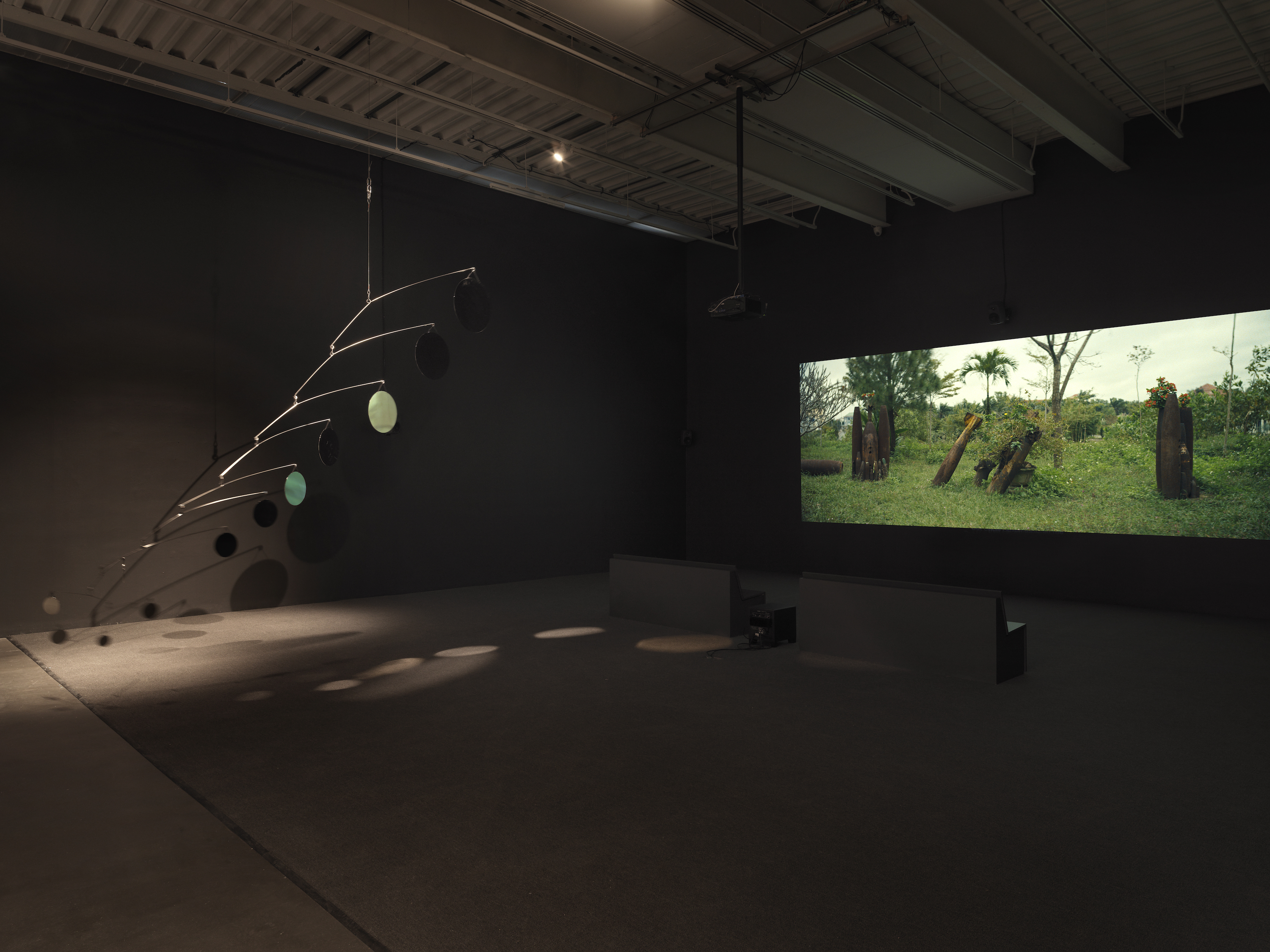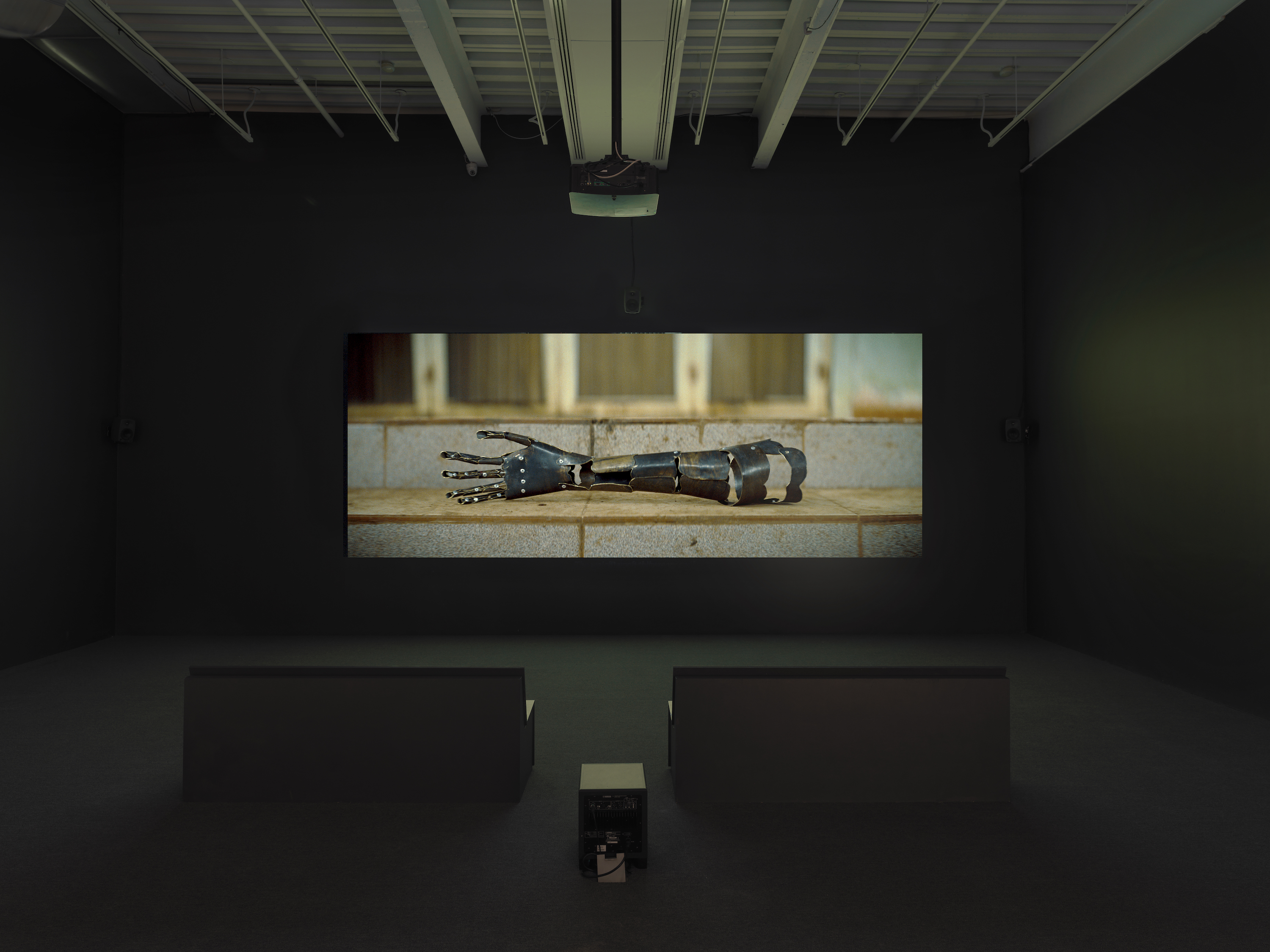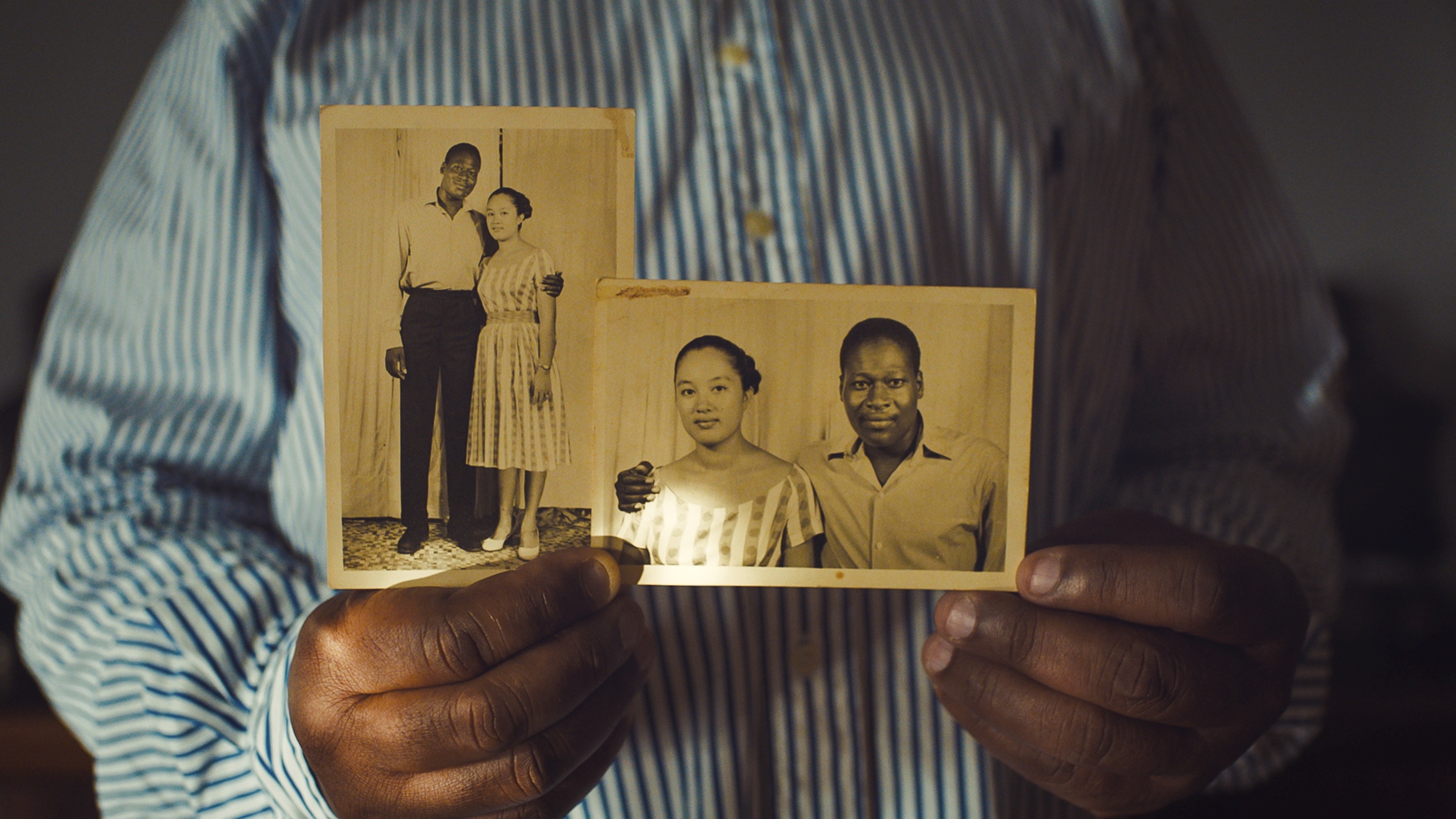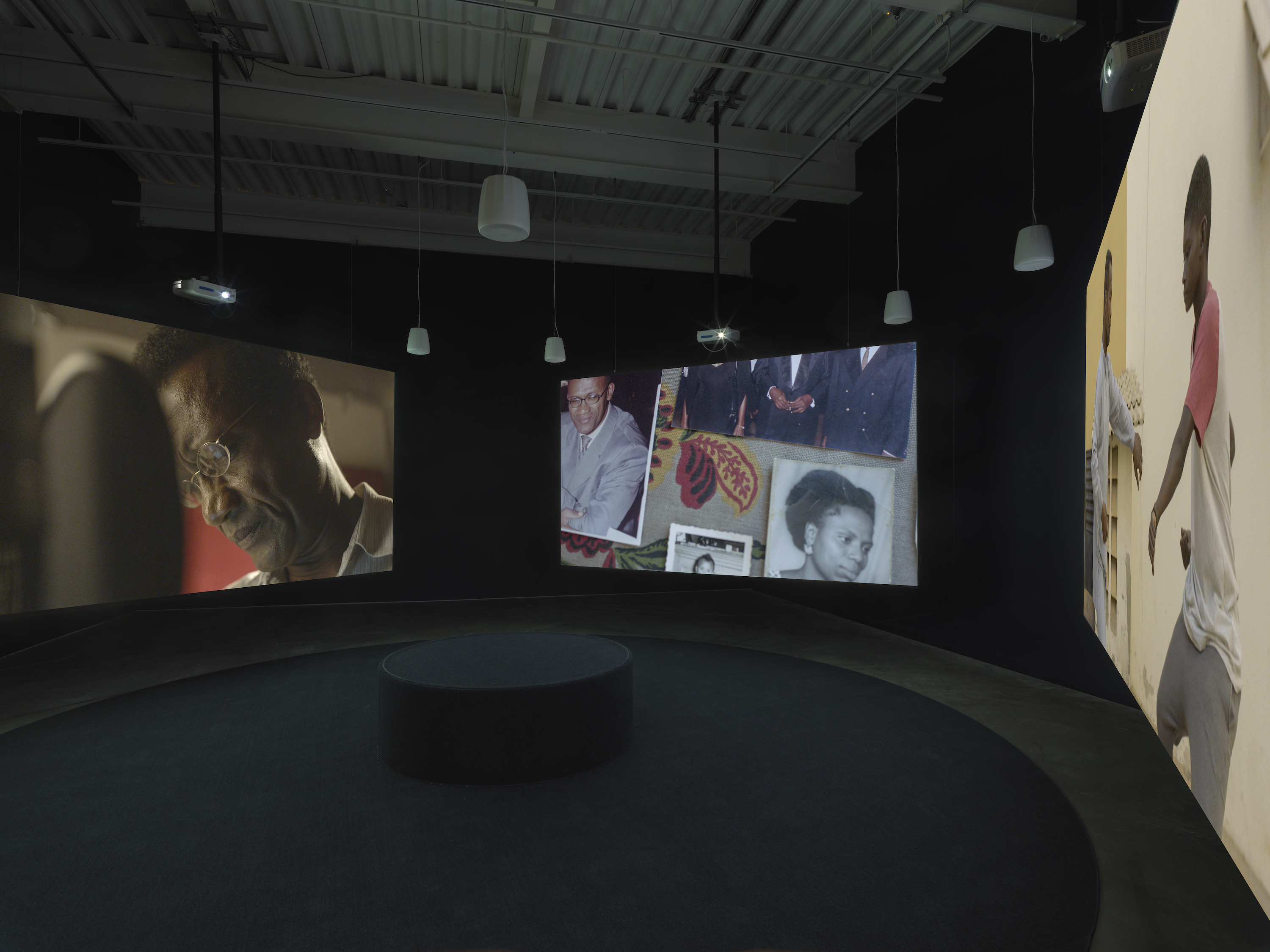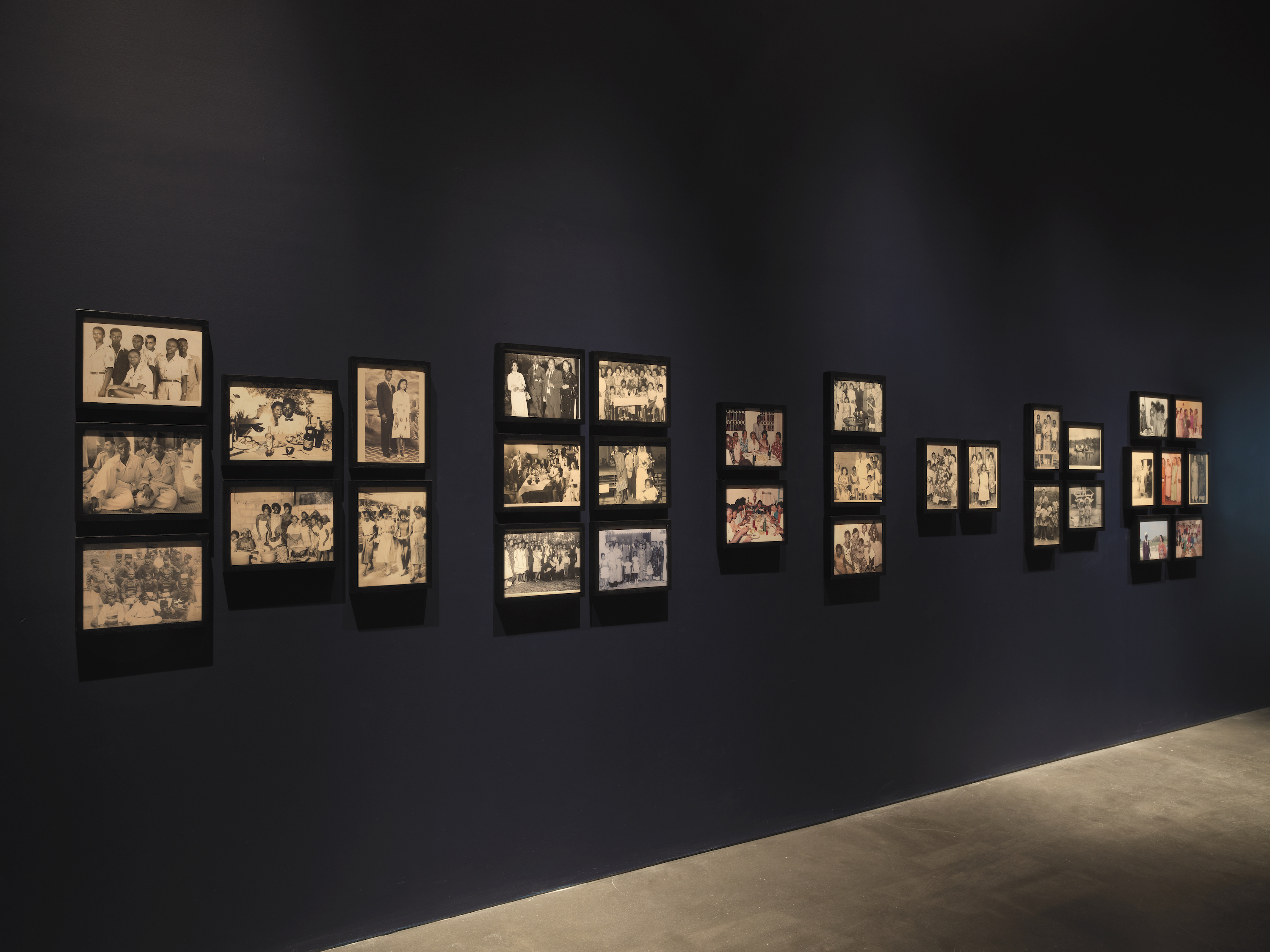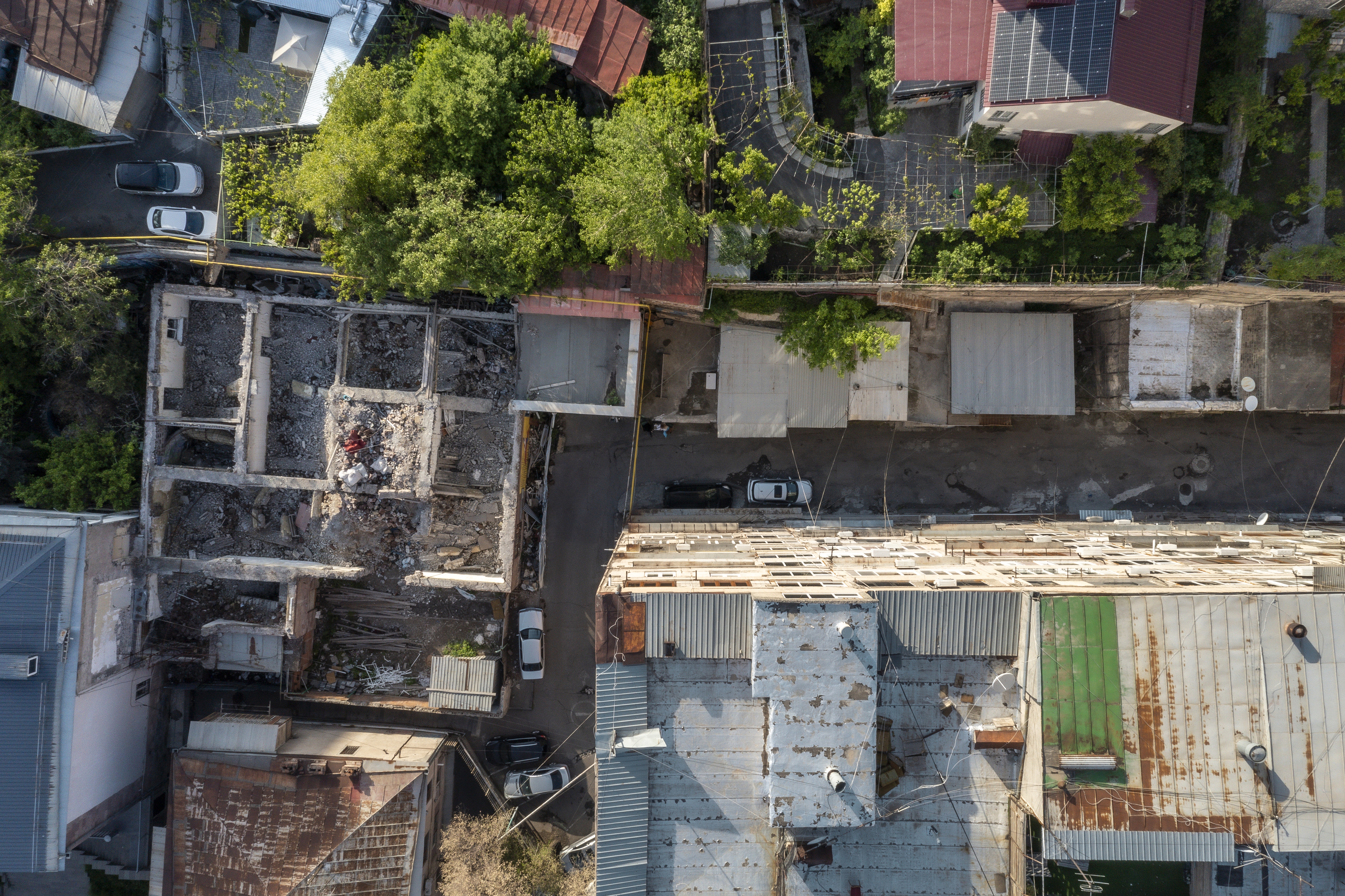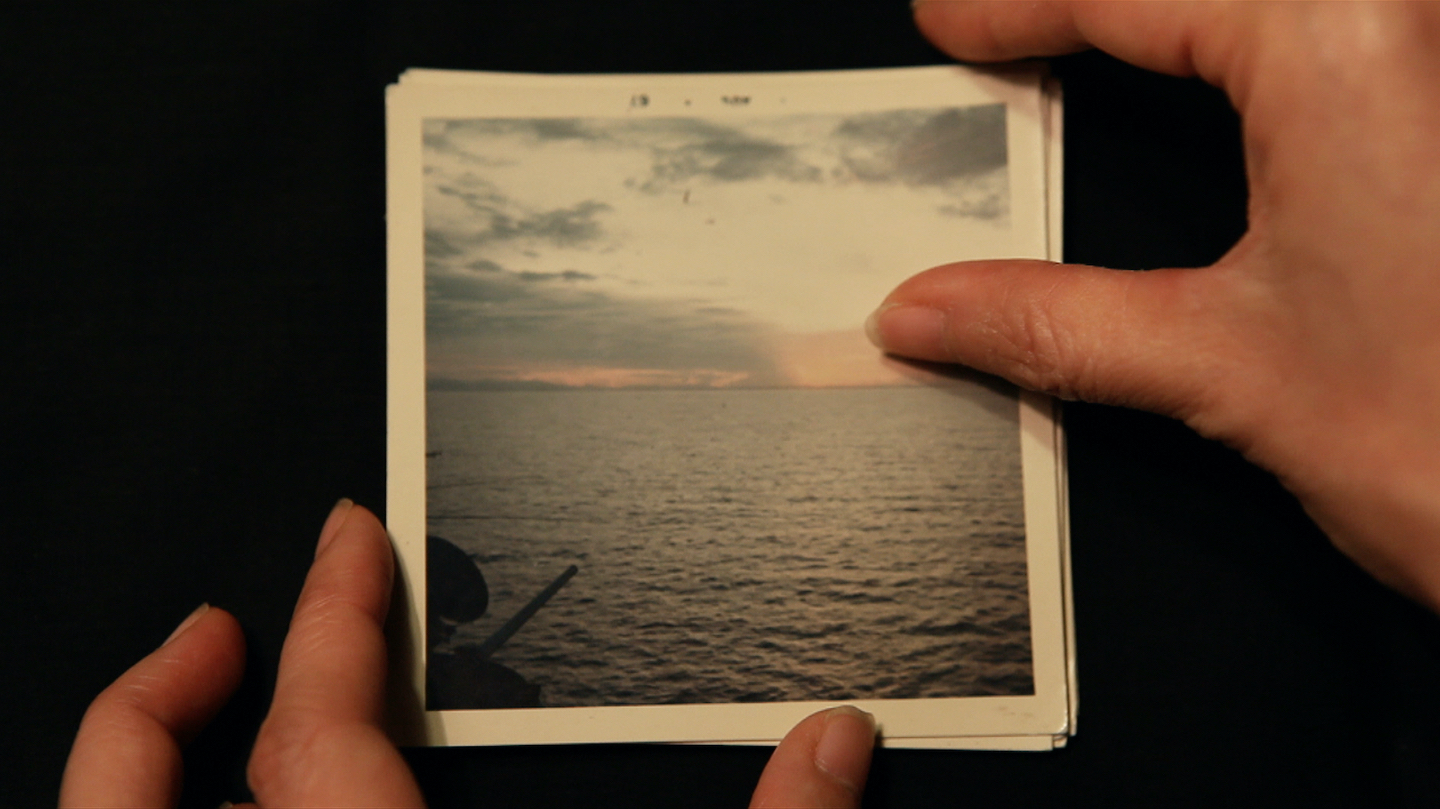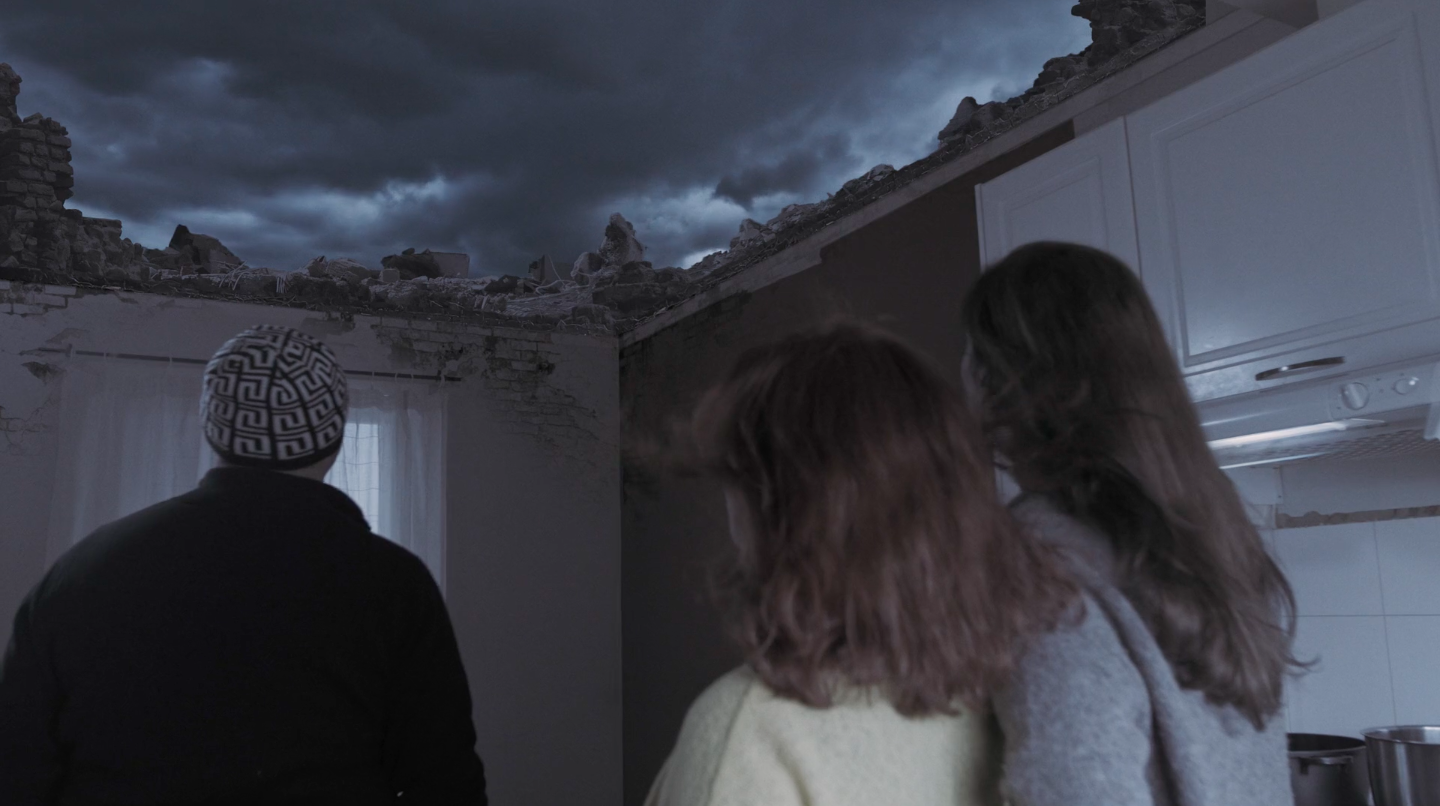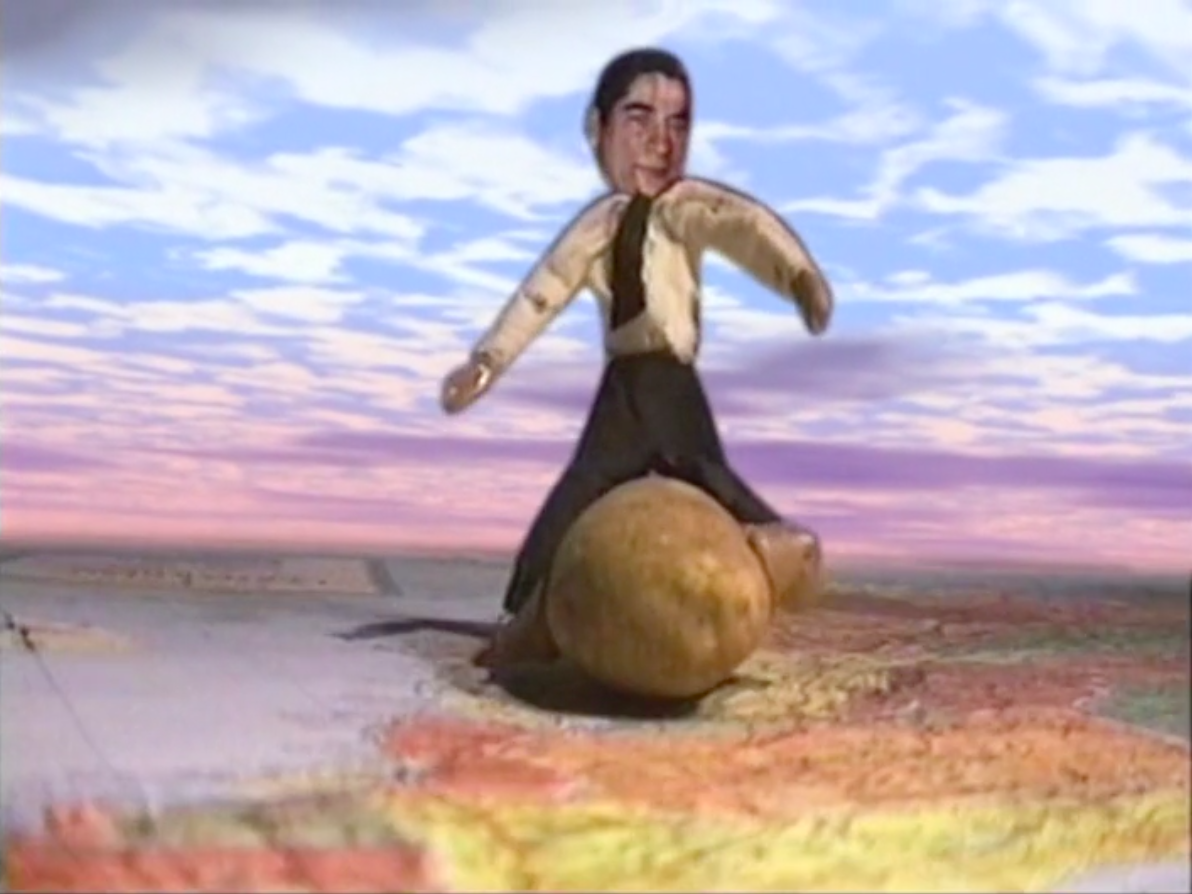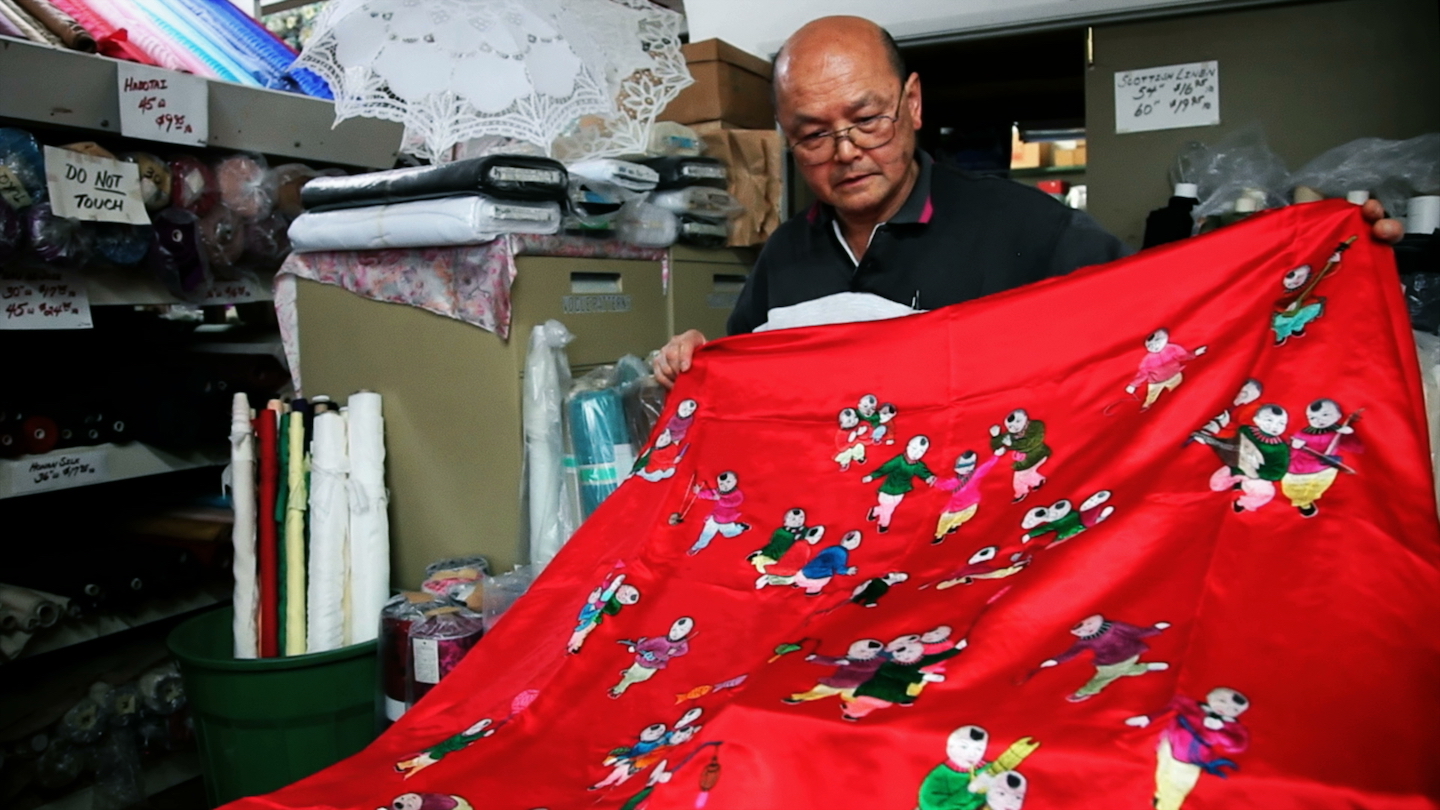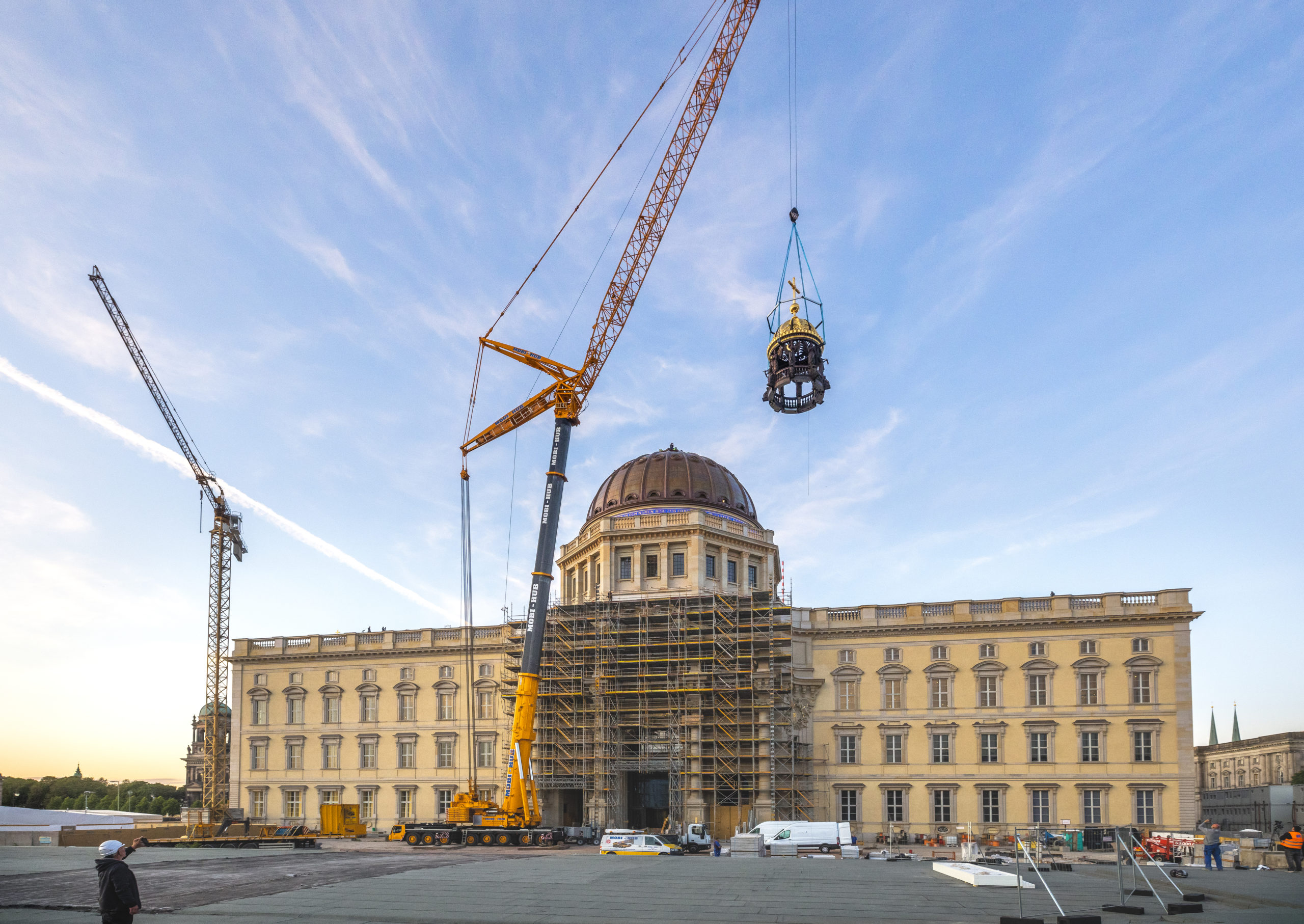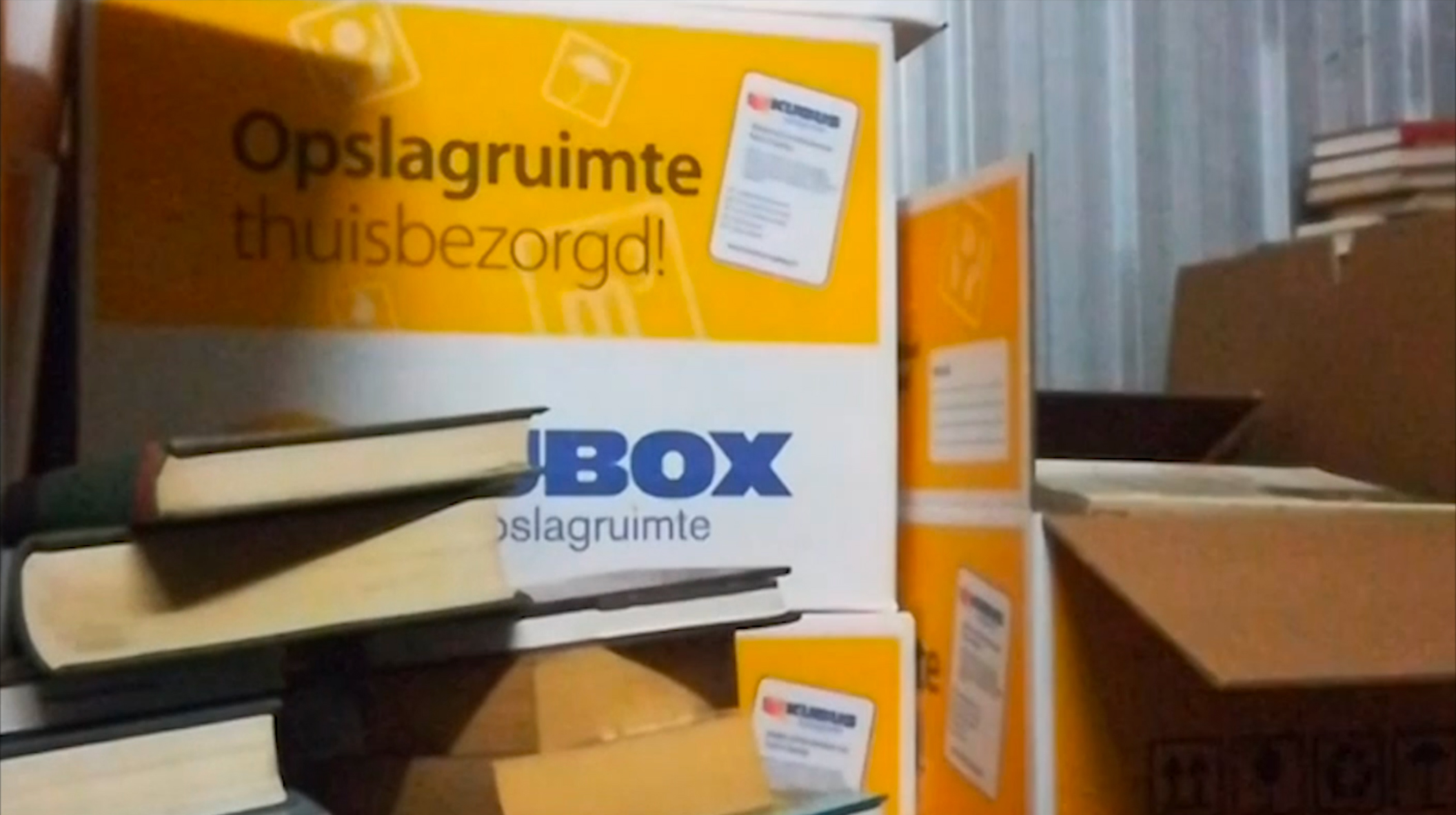June 29–September 17, 2023
In Ken McMullen’s experimental film Ghost Dance (1983), Jacques Derrida proclaims that “Cinema is the art of ghosts, a battle of phantoms. It’s the art of allowing ghosts to come back.”1 This assertion of film’s proximity to the spectral plays out across Tuan Andrew Nguyen’s video installations, three of which anchor “Radiant Remembrance.” Blending animist beliefs held by Indigenous communities across Southeast Asia with the importance given to reincarnation within Buddhist theology, Nguyen uses film as a medium, not just as the material form of his art practice but as a channel through which to conjure forgotten pasts, narrate counter-memories, and confront historical violence and ecological destruction. After all, what are ghosts, if not simply our ancestors, and our memories of them, continuing to radiate their presence to us? What is remembrance if not simply a form of reincarnation?
These capacities are most clearly articulated in The Specter of Ancestors Becoming (2019), an immersive four-channel video installation about the descendants of the tirailleurs sénégalais—Senegalese soldiers conscripted to fight for the colonial French army in the First Indochina War who fathered children with Vietnamese women. That conflict ended a year before the 1955 Bandung Conference, which sought to build cooperation amongst the newly independent nations of Africa and Asia, allied through their former subjugation to colonial power. Nguyen’s installation examines an instance of such Afro-Asian solidarity that is not simply political or ideological but also deeply intimate and affective, that is embodied through genetics and expressed as love.
Like many of Nguyen’s film projects, Specter was developed in close collaboration with members of Dakar’s Vietnamese-Senegalese community, who wrote the three imagined scenarios at its core. Using a strategy that Saidiya Hartman has called “critical fabulation,” wherein imagination and fiction are used to fill in archival gaps when recounting marginalized and erased histories, they narrate key moments from their ancestors’ pasts, allowing them to emerge more fully into view. The first, between Waly, a soldier, and his wife Lan in the days following the French defeat in 1954, grapples with the impossible decision of whether to leave or stay. In the second, Madou confronts his father Ibra, who hid the fact of Madou’s Vietnamese birth mother from him for decades. The third is a conversation about remembering and forgetting between Fatima and her grandmother Maam, as the younger one lovingly brushes her elder’s hair. In each of these sequences, while one screen shows the scene’s author reading out its script in a recording booth, the facing screen presents an enactment of it, with the actors falling in and out of sync with the dialogue. Flitting across the two remaining screens are shots of family photographs and documents; filmed portraits of individuals and groups, often holding up photographs of their ancestors; and Macodou Ndiaye, author of the second scene, practicing the Vietnamese martial art of Viet Vo Dao with a younger man, possibly his son—a balletic performance that exorcises the heaviness of his imagined encounter with his father. Though a singular audio track unites the four-channels, it echoes and ripples—or, as the artist puts it, is “ventriloquized”—across and in between various screens and bodies, possessing and speaking through them as it does. This dispersal, aided by an ever-moving camera, frequent edits, and slow-motion interludes, results in a phenomenological disorientation that emphasizes multiplicity, approximating the uncertainties of memory and the inbetweenness of diaspora.
Specter opens with Ndiaye reading out a letter from his mother to his father, carefully and tenderly interpreting her broken French, the way the children of immigrants often do for their parents. Though communication technologies have collapsed space and compressed time to an instant, the epistolary is a form achingly familiar to those separated from loved ones. While Nguyen shares an interest in excavating the forgotten fringes of colonial pasts through letters with a peer like Bani Abidi—whose wonderful installation Memorial to Lost Words (2016) resurrects the complex inner lives of Indian soldiers who fought for the British during World War I, engraving fragments of their correspondence home like epitaphs on marble slabs—he uses the epistolary speculatively, like a time machine, to connect the living and the dead, enabling otherwise impossible intergenerational dialogue. In an uncanny echo of Derrida, Nguyen, in an interview with exhibition curator Vivian Crockett, describes the letter as “an ancient ghost-form,” and writing one as “a form of speaking with ghosts.”
This logic drives a new related work, titled Because No One Living Will Listen (2023), on the history of Moroccan tirailleurs who defected to the Vietnamese side during the same conflict. Its voiceover is a letter penned by Habiba to her Moroccan father who died when she was just two years old. Punctuated by the haunting refrain of the work’s title, she recounts her life, her liminal existence in Vietnamese society and the hardships endured as a result, an emotional return trip to Morocco, her futile attempts to seek her father out, to remember him, to mourn him, and to put him to rest. The film deploys the Moroccan Gate, a structure built to commemorate the solidarity shown by these soldiers with the Vietnamese, as a symbolic portal, much like the letter and the sole photograph Habiba has of her together with her father, through which to retrieve the past, to commune with the dead.
Nguyen’s retracing of these forgotten genealogies finds an unexpected formal rhyme in the cascading kinship chart-like branched structure of A Rising Moon Through The Smoke (2022), the largest of a series of Calderesque mobiles made using metal from unexploded ordinance from the Vietnam War, which is littered throughout the countryside and continues to pose a threat to its inhabitants. A version of the sculpture appears in the accompanying feature-length film The Unburied Sounds of a Troubled Horizon (2022), which focuses on Nguyet, a young woman who scavenges and resells these remnants of war to survive but also compulsively transforms them into such mobiles. As she comes to believe that she is a reincarnation of the American sculptor, a conversation with a priest at a nearby temple—who shows her a bomb-turned-temple bell, tuned to a known healing frequency—reveals a possible purpose for her inexplicable sculptures. While the film and sculptures critique the purported autonomy of the canonical modernist artwork by ascribing a reparative function to it, they also suggest that this healing energy can be activated or channeled through such transformative reuse, another, more material, type of reincarnation, turning the residues of trauma into the very tools needed to transcend it.
Quoted in Suneil Sanzgiri, “Diaspora at a Distance,” Broadcast (May 5, 2022), https://pioneerworks.org/broadcast/suneil-sanzgiri-diaspora-at-a-distance.
